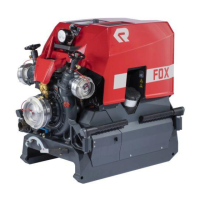Environmental protection
90 / 97
Disposal of hazardous substances
10 Environmental protection
10.1 Disposal of hazardous substances
Dispose of all materials and old parts that are produced through the han-
dling and repair of this unit in an environmentally sound way.
Disposal of used oil, cooling water and fuels
Used oil, cooling water and fuels are water-polluting substances. Ensure
the correct disposal of used oils and fuel.
► Never pour used oil, cooling water of fuel on the ground, in a body of
water, in the sink or down the drain.
► Carefully collect and dispose of used oil.
► Observe local regulations.
Disposal of foam compound
Toxic foam compound is hazardous to health!
► Observe the material safety data sheets of the manufacturer of the
foam compound.
► Do not dispose of foam compounds in bodies of water or in the sewage
systems.
► Observe the manufacturer's disposal information.
Disposal of desiccant inserts, filter cartridges, boxes and inserts
Filter inserts, boxes and cartridges (oil filters, desiccant inserts of the air dri-
er) are considered hazardous waste and must be disposed of properly.
► Observe local regulations.
Disposal of batteries
Since batteries are a pollutant, they must be disposed of properly.
► Never dispose of batteries with household waste!
► Observe local regulations.
Disposal of metal, rubber, and plastic parts
Improper disposal of metal, rubber and plastic parts will contaminate the en-
vironment.
► Observe local regulations.
Disposal of adhesives, paints and coating materials.
Improper disposal of adhesives, paints and coating materials will contami-
nate the environment.
► Observe local regulations.
Disposal of control devices
Control devices are hazardous waste and must be disposed of properly.
► Observe local regulations.

